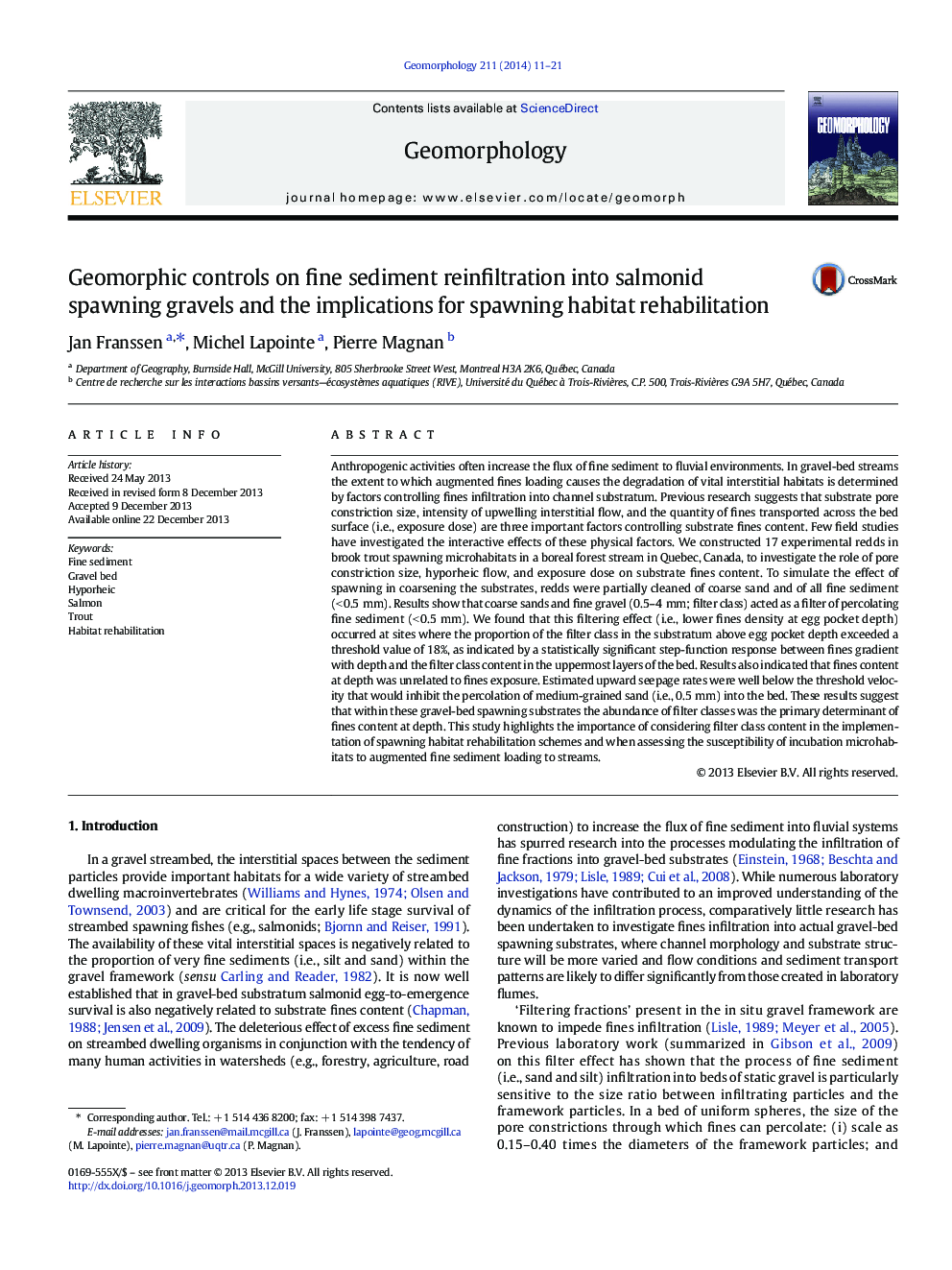| کد مقاله | کد نشریه | سال انتشار | مقاله انگلیسی | نسخه تمام متن |
|---|---|---|---|---|
| 4684573 | 1635438 | 2014 | 11 صفحه PDF | دانلود رایگان |
• We examine physical factors modulating fines accumulation within gravel substratum.
• 17 experimental redds constructed in brook trout spawning microhabitats.
• Coarse sand and fine gravel acted as a filter of percolating fine sediment (< 0.5 mm).
• Fines content at depth unrelated to: fines exposure dose and interstitial seepage flux.
• Highlights importance of considering filter class content in habitat rehabilitation
Anthropogenic activities often increase the flux of fine sediment to fluvial environments. In gravel-bed streams the extent to which augmented fines loading causes the degradation of vital interstitial habitats is determined by factors controlling fines infiltration into channel substratum. Previous research suggests that substrate pore constriction size, intensity of upwelling interstitial flow, and the quantity of fines transported across the bed surface (i.e., exposure dose) are three important factors controlling substrate fines content. Few field studies have investigated the interactive effects of these physical factors. We constructed 17 experimental redds in brook trout spawning microhabitats in a boreal forest stream in Quebec, Canada, to investigate the role of pore constriction size, hyporheic flow, and exposure dose on substrate fines content. To simulate the effect of spawning in coarsening the substrates, redds were partially cleaned of coarse sand and of all fine sediment (< 0.5 mm). Results show that coarse sands and fine gravel (0.5–4 mm; filter class) acted as a filter of percolating fine sediment (< 0.5 mm). We found that this filtering effect (i.e., lower fines density at egg pocket depth) occurred at sites where the proportion of the filter class in the substratum above egg pocket depth exceeded a threshold value of 18%, as indicated by a statistically significant step-function response between fines gradient with depth and the filter class content in the uppermost layers of the bed. Results also indicated that fines content at depth was unrelated to fines exposure. Estimated upward seepage rates were well below the threshold velocity that would inhibit the percolation of medium-grained sand (i.e., 0.5 mm) into the bed. These results suggest that within these gravel-bed spawning substrates the abundance of filter classes was the primary determinant of fines content at depth. This study highlights the importance of considering filter class content in the implementation of spawning habitat rehabilitation schemes and when assessing the susceptibility of incubation microhabitats to augmented fine sediment loading to streams.
Journal: Geomorphology - Volume 211, 15 April 2014, Pages 11–21
